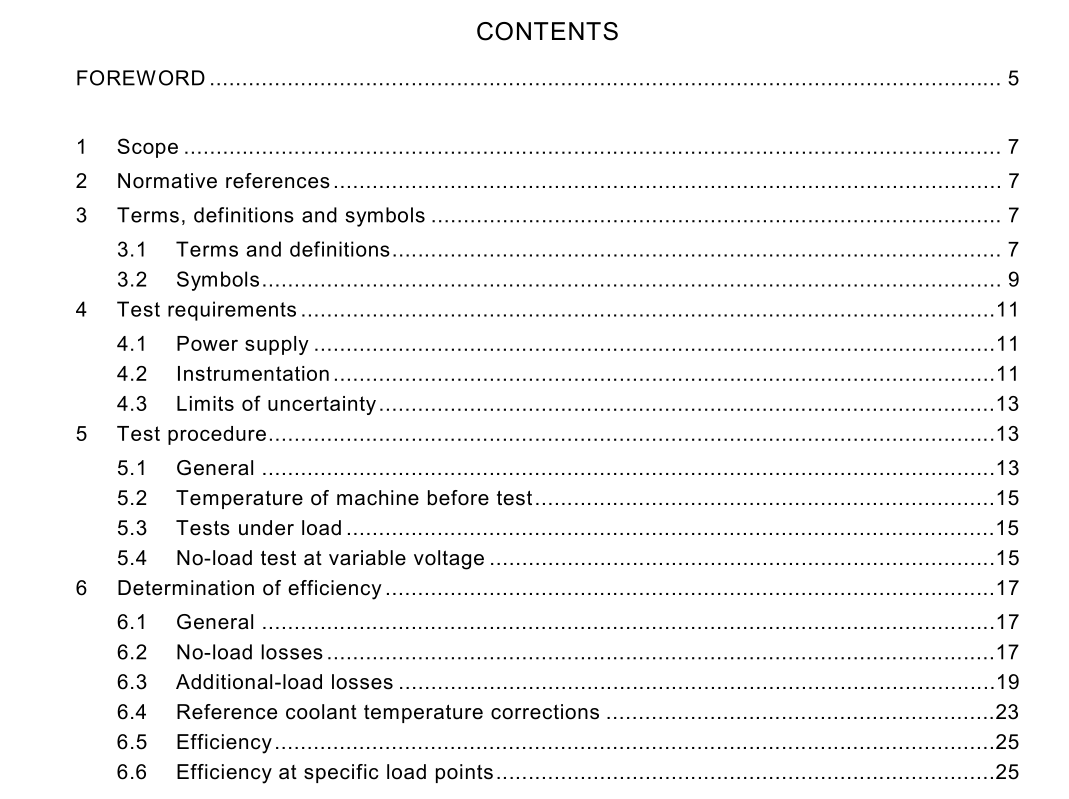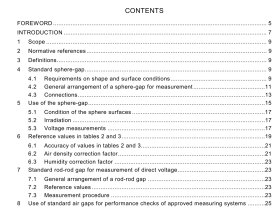IEC 61972 pdf download

IEC 61972 pdf download.Method for determining losses and efficiency of three-phase cage induction motors
1 Scope
This International Standard is applicable to three-phase cage induction motors and establishes two methods for determination of efficiency: • Method 1: for motors tested by using a torque measurement device, with additional load losses derived from measurements; • Method 2: for motors tested without torque measurement, with assigned additional load losses. The two methods are different in the procedure to obtain the additional load losses. Unless otherwise specified, method 1 should be used for motors up to 150 kW. For other methods of efficiency estimation, see IEC 60034-2.
2 Normative references
The following referenced documents are indispensable for the application of this document. For dated references, only the edition cited applies. For undated references, the latest edition of the referenced document (including any amendments) applies. IEC 60034-1, Rotating electrical machines – Part 1: Rating and performance IEC 60034-2:1972, Rotating electrical machines – Part 2: Methods for determining losses and efficiency of rotating electrical machinery from tests (excluding machines for traction vehicles) Amendment 1 (1995) Amendment 2 (1996) IEC 60044 (all parts), Instrument transformers IEC 60051-1, Direct acting indicating analogue electrical measuring instruments and their accessories – Part 1: Definitions and general requirements common to all parts IEC 60279, Measurement of the winding resistance of an a.c. machine during operation at alternative voltage
4 Test requirements
4.1 Power supply 4.1.1 Voltage The voltage shall be the rated voltage and the electrical supply in accordance with 6.2.1 of IEC 60034-1. 4.1.2 Frequency The frequency shall be within ±0,3 % of specified frequency during measurements. 4.2 Instrumentation 4.2.1 Measuring instruments for electrical quantities The measuring instruments shall have an accuracy class of 0,2 in accordance with IEC 60051-1. Since instrument accuracy is generally expressed as a percentage of full scale, the range of the instrument chosen shall be as low as practical. 4.2.2 I nstrument transformers Instrument transformers shall have an accuracy class of 0,2 according to IEC 60044. 4.2.3 Torque measurement The instrumentation used to measure the torque shall have an accuracy of ±0,2 % of full scale. When the loading device is a dynamometer, a torque correction test shall be carried out. A method to obtain the corrected torque T is given in Annex C.4.2.4 Speed and frequency measurement The instrumentation used to measure frequency shall have an accuracy of ±0,1 % of full scale. The speed measurement should be accurate within ±1 min –1 of the reading. 4.2.5 Temperature measurement The instrumentation used to measure temperatures shall have an accuracy of ±1 °C. 4.3 Limits of uncertainty 4.3.1 General Uncertainty as used in this standard is the uncertainty of determining a true efficiency. It reflects variations in the test procedure and instruments. 4.3.2 Method 1 Efficiency and loss values determined by method 1 are normally within an uncertainty of ±0,5 % points on efficiency, or ±0,5 %/(1 – η ) on total losses. 4.3.3 Method 2 Since the additional load losses are not measured in method 2, a statement on efficiency uncertainty limits is not possible. For the measured part of the losses, the uncertainty is normally within ±1 % on measured losses.
5 Test procedure
5.1 General The subtests that make up this test procedure shall be performed in the sequence listed. It is not essential that the tests are carried out in immediately one after another. However, if the subtests are performed individually, then the specified thermal conditions shall be re- established prior to obtaining the test data. All load tests and measurements specified in 5.3.2 shall be carried out for the determination of efficiency by method 1. When it is intended to apply method 2 with assigned additional load losses, torque measurements need not be taken, and the number of load points in 5.3.2 may be reduced to rated load. Unless otherwise stated in this standard, the arithmetic average of the three line currents and voltages shall be used. The stator line-to-line resistance is the value across any two terminals for which a reference value has been measured at a known temperature. The temperature rise of windings shall be determined by the resistance method; either by direct measurement or by the superposition method. NOTE Determining the resistance with temperature-measuring devices for each load point will provide a more accurate test result than determining R before the highest and after the lowest load reading, especially for motors with low thermal time constants.









